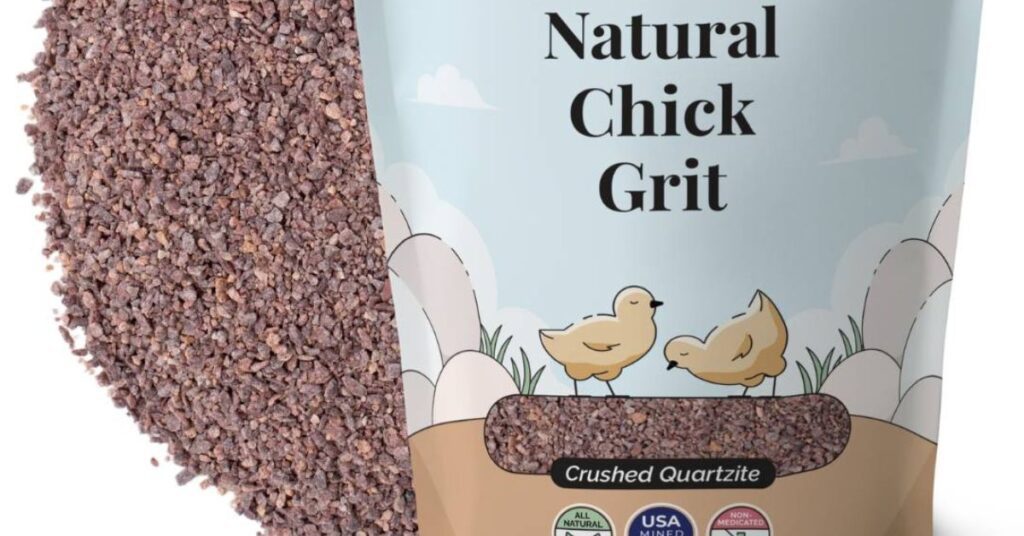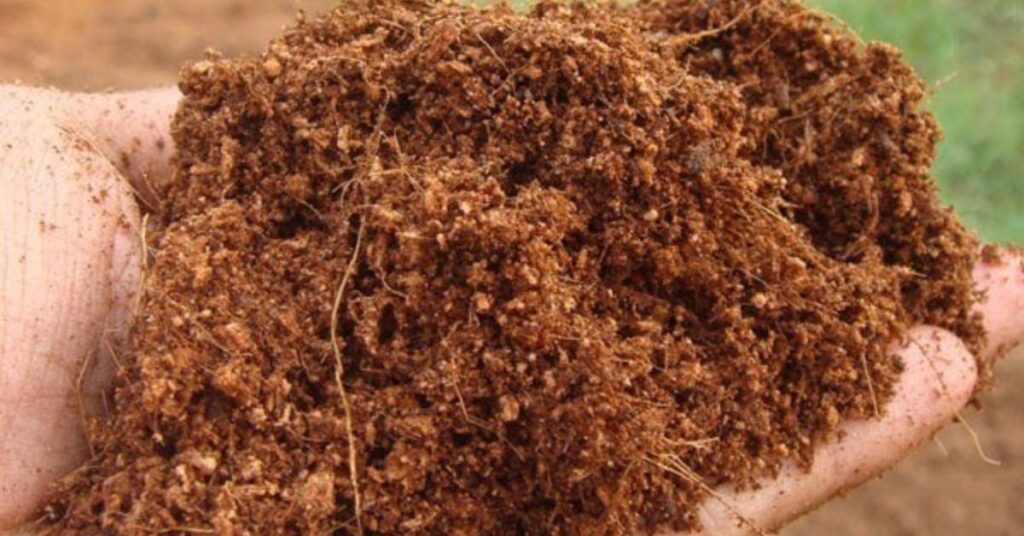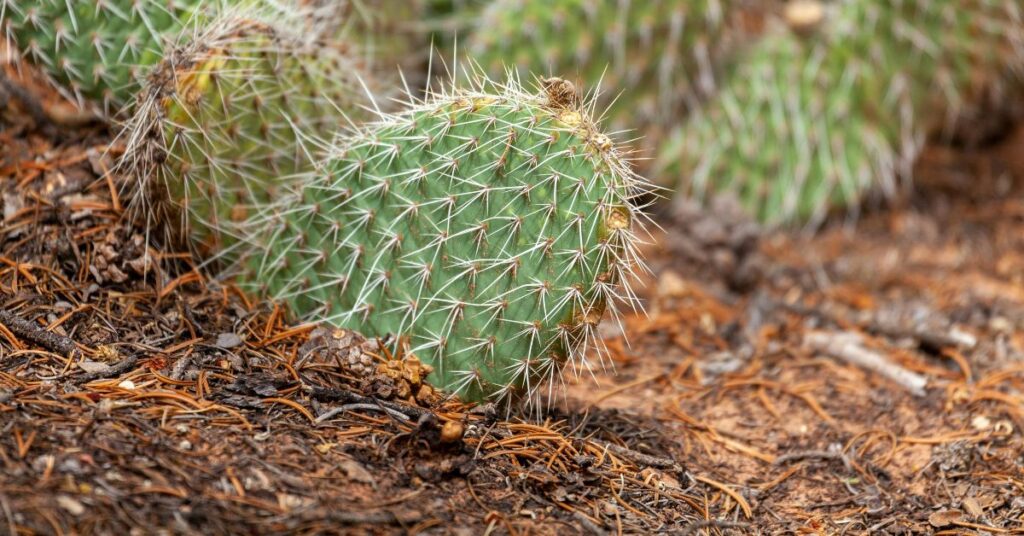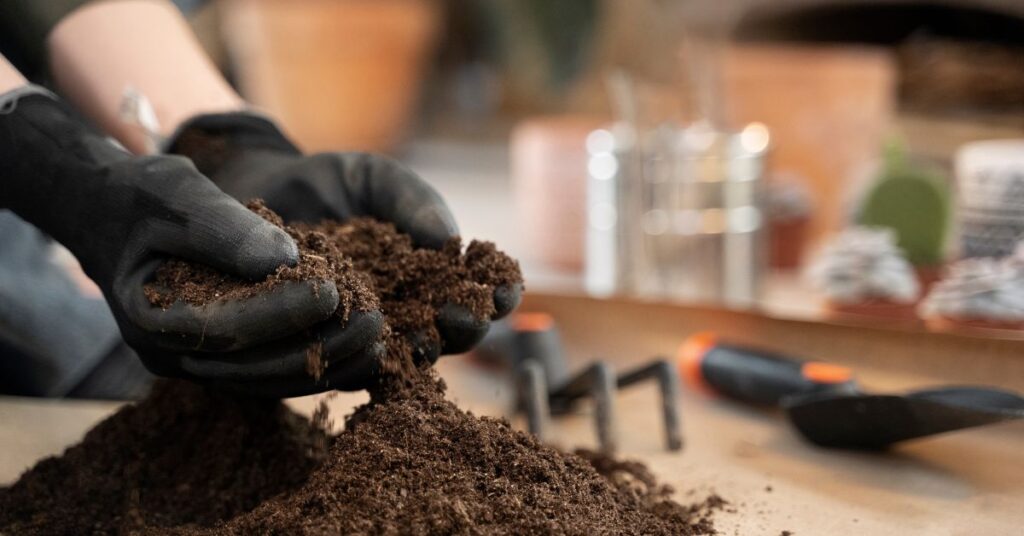In this post, I am going to show you Exactly how to make perfect cactus soil that makes your cactus grow fast with no risk of dying.
This is the same process that gardeners use and get the results.
So, if you want to make the perfect cactus soil mix and grow the plant without the fear of losing the cactus, you’ll love this guide.
Let’s dive right in…
Requirements To Make Cactus Soil
You’ll need the following things to make the best cactus soil. These things are available at online marketplaces like Etsy and Amazon. The nursery near you is also a good option.
Potting Soil

Potting soil is your main component for making cactus soil mix. When buying it, make sure this soil is for all purposes. Some potting soils are made to retain moisture, and these are bad for succulent plants.
In addition, do not take the soil from the garden. Potting soil already has organic matter, but if you want to add it manually, the guide is shown below.
Drainage improver
The ability of cactus soil to drain the water is very essential. The good thing is that you can increase or decrease it according to requirements.
Select One drainage improver that is easily accessible for you. You can make cactus soil mix without sand by selecting the alternative from below.
Perlite

When volcano gas is heated to 1000 Celsius, perlite is formed. Perlite is white in color, and it helps in draining water. Gardeners use it for making soil that best fits cacti-type plants.
Pumice

Pumice is a lightweight volcano rock. Tiny stones have small holes inside and allow drainage of water. It also regulates the moisture. It is the same as perlite but is more dense and holds better water.
Horticultural Grit

Horticultural grit is a course. It is made of quartz gravel or crushed granite. It has different colors like white, brown, and pink. In simple, these are small stones that improve drainage of water.
Gravel

Gravel is a collection that has rock fragments. It occurs on Earth naturally. Gravel is larger than sand and smaller than 63 millimeters. It is also produced on a commercial level by crushing the stones.
Sand

Coarse sand is best for making the best soil for cactus. It prevents the compaction of soil even in rain. Another benefit of using sand is it allows aeration.
Turface

Turface is used as a soil amendment. It is fired calcined clay. Highly porous and durable are the main qualities of it. Moisture level remains balanced due to its little pores.
Poultry Grit

It is a substance that is made from oyster shells, eggshells, or granite. This material is given to chickens. People also use it for succulents.
Organic Material
In potting soil, mostly organic material is already added, and you can check for it. If your potting soil has not, then add it but in a very small quantity.
Peat

It is soil that is found on the surface and is organic. It has plant material as the main organic material. Peatlands, bogs, mires, and muskegs have peat. Peat moss is a common component of peat.
Moss Compost

It is a versatile material and can be used as fertilizer for plants. Moss compost is made of organic matter. The moss of lawns is used to make moss compost.
Coco Coir

Coco coir is a byproduct of the coconut industry. It is also known as coco peat or coir pith. Coco coir is made from a fibrous layer of coconut and its outer dust. It increases resistance to disease and is good for retention.
Vermiculite

Vermiculite is a natural mineral. It is also used for soil amendment. Mica-like material that contains shiny flakes. After heating to a high temperature, it expands 8 to 30 times its original weight.
Note: Only add one or two items in a very small amount.
Optional Material
Although cacti do not need many nutrients, adding a small amount can improve growth and help increase resistance to diseases.
Fertilizer
The fertilizer that is specific to succulent plants is good for cactus. But it should contain nitrogen, phosphorus and potassium. Their ratio should be 5-10-10. You can add fungicide as well.
But give it to cactus plants in a year or once in two months.
Pine Bark
It is optional, and its benefits are to prevent waterlogging and allow drainage of excess moisture. That’s why it is good for cacti roots.
You will also need a container for mixing. It could be a large bowl or bucket or anything such.
Measuring the scoop is also necessary. You can use anything for measuring, like a mug, pot, etc, but it should be the same for all measurements.
Cactus Soil mix ratio

Take the first step and put three parts of potting soil and two parts of sand or what you selected for drainage.
Your second step is to mix them properly using your hands. Make sure to use gloves and mix thoroughly.
The last step is to add one part of perlite and mix it. Your best cactus soil is ready to use.
Propagating the cactus

Whatever type of cactus you are going to propagate. Stem length should be 5 to 7 inches long.
Dry it in light for a few days and apply fungicide on the cut edge. Plant it deep in soil up to half an inch. The planted side should have spines.
Don’t give water for a week or more in the start, and keep in bright light, not direct light.
Taking care of Catus Soil
After a long period of time, the quality of the soil becomes low. At this time, you need to replace the soil. Or you may need to report as well.
If you want to repot a cactus soil, add the above elements to already existing soil and put it in a new pot. You need to add the same elements if the soil is too old.
When reporting, make soil, select a larger clay pot, and give some water to the plant. After some time, the soil becomes soft, and you can easily extract it and plant it in a new pot. Give some water and leave it in the sunlight.
Cactus Soil recipe

Catus soil recipe includes the following things:
Three parts of all-purpose potting soil.
Two parts of sand/pumice/horticultural grit/ gravel.
One part of the perlite
Half part of fertilizer.
Bonus point: Cactus Soil uses
You can’t only use it for cacti but also for other succulent plants and bonsai trees.
Succulent plants are Burro’s Tail, echeveria elegans, fascinated Haworthia, the Crown of Thorns, etc.
Types of bonsai trees are ficus, jade bonsai, juniper bonsai, Japanese maple, etc.
Cactus soil can’t be used for all types of plants. As you know, some plants need more water, moisture, and a higher amount of nutrients than others.
If you give cactus soil to a plant that needs a lot of nutrients and a high amount of water, the results will be bad for the face. Instead, if you give cactus soil to aloe vera and snake plants, it is a good decision.
There you have it.
Detailed knowledge about making the best cactus soil.
Which drainage improver are you going to select?
Or
You’ll buy pre-made cactus soil?
Let me know in the comment section.
